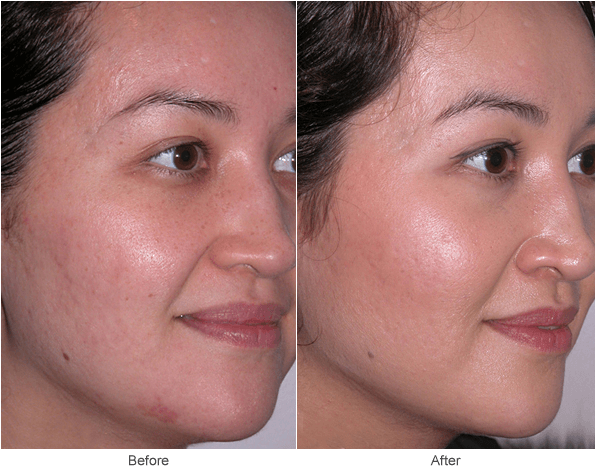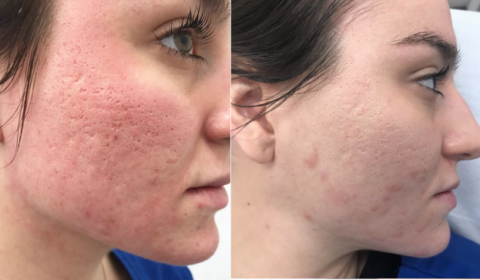Targeted Acne Scars Treatment: Attain Smooth, Even Complexion
Targeted Acne Scars Treatment: Attain Smooth, Even Complexion
Blog Article
Comprehending the Various Skin Problem and Reliable Therapy Choices for Acne Marks
Acne scars represent an intricate interplay of skin conditions that significantly effect individuals' self-confidence and general skin health. As we discover the landscape of acne mark management, it becomes obvious that the trip toward clearer skin might include even more than simply topical options.
Kinds of Acne Scars

In contrast, hypertrophic marks result from an overflow of collagen throughout the healing procedure, causing increased areas on the skin. These marks are commonly firm and can vary in shade, sometimes appearing red or darker than the surrounding skin.
Comprehending these sorts of acne marks is important for establishing an efficient treatment plan - acne treatment for sensitive skin. Choices may consist of chemical peels, laser therapy, microneedling, or dermal fillers, tailored to the specific scar type. A comprehensive appointment with a skin specialist can aid identify the most appropriate treatment, taking right into account the individual's skin type, mark seriousness, and general skin health
Causes of Acne Scarring
Marking happens as an outcome of the body's natural healing reaction to inflammation and injury brought on by acne lesions. When acne forms, it sets off an inflammatory reaction, causing the launch of various cytokines and growth variables that advertise recovery. This process can sometimes lead to extreme tissue development or insufficient repair, resulting in scars.
The key sources of acne scarring consist of the intensity of the acne itself, duration of the lesions, and specific skin types. Serious inflammatory acne, such as blemishes and cysts, is most likely to lead to scarring due to deeper tissue damage. Furthermore, improper handling of acne lesions, such as selecting or pressing, can aggravate cells injury and inflammation, increasing the probability of scarring.
Genetic tendency also plays a significant role; people with a family history of scarring are at a higher risk. Skin kind and shade can influence scar development, as darker skin tones might experience post-inflammatory hyperpigmentation, while lighter skin may establish atrophic marks.
Ultimately, recognizing these reasons is vital in managing acne and mitigating the possibility for scarring.

Therapy Options for Scarring
Effective treatment choices for acne scarring vary depending on the kind and intensity of the marks. Generally categorized into atrophic, hypertrophic, and keloid marks, these conditions call for tailored methods for optimal results.
For atrophic marks, which are identified by a loss of cells, therapies such as chemical peels, microdermabrasion, and laser treatment are generally used. These methods promote skin renewal and boost collagen production, thus enhancing skin appearance. Subcision, a minimally invasive procedure, can likewise work by breaking up fibrous bands Continued below the skin.
Keloid and hypertrophic marks can be a lot more challenging to treat. Choices include corticosteroid shots to minimize swelling and squash the marks. Sometimes, cryotherapy or laser therapy might be advised to decrease their blog appearance.
Surgical options are available for severe scarring, where excision or skin grafting might be necessary. It's essential for individuals to speak with a skin doctor to assess their particular scar type and go over one of the most suitable therapy strategy. Incorporating numerous treatments usually produces the very best outcomes, guaranteeing that each person's one-of-a-kind skin condition is dealt with effectively.
Natural Home Remedy and Natural Solutions
All-natural solutions and natural remedy can supply an accessible technique for people seeking to enhance the appearance of acne scars (acne scars). Different ingredients found in the home kitchen have demonstrated prospective advantages in boosting skin appearance and advertising recovery

One more effective choice is lemon juice, which works as a natural exfoliant and can lighten hyperpigmentation. It should be made use of carefully, as it might create photosensitivity. Oat meal masks are also useful; their gentle peeling can aid get rid of dead skin cells while soothing inflammation.
Essential oils, such as tea tree oil and lavender oil, can better support mark recovery as a result of their antimicrobial residential properties. It is crucial to execute a patch test before using any treatment to guarantee there are no negative reactions. These natural services can be a complementary approach in the trip to lessen acne scars.
Avoiding Future Scarring
Taking on an aggressive approach to skin care can substantially minimize the danger of creating future acne marks. Among the key approaches is to handle acne successfully as it develops. This involves using non-comedogenic skin care products and medications prescribed by hop over to here dermatologists that target acne without aggravating the skin. Regular cleaning, peeling, and hydration can help preserve skin wellness and stop stopped up pores.
Furthermore, avoiding the lure to squeeze or pick acne sores is essential, as this can result in inflammation and subsequent scarring. Instead, people must focus on applying topical treatments that advertise healing and minimize swelling. Components such as salicylic acid, benzoyl peroxide, and retinoids are understood for their effectiveness in managing acne and reducing marks.
Sun security is another crucial part; direct exposure to UV rays can impede and darken scars healing. Consequently, making use of a broad-spectrum sun block daily can mitigate these effects - skin rejuvenation treatments.
Last but not least, preserving a healthy and balanced diet regimen abundant in anti-oxidants and remaining hydrated supports skin regeneration. By applying these safety nets, people can considerably lower their danger of future scarring and promote general skin health and wellness.
Final Thought
To conclude, a comprehensive understanding of acne marks, incorporating both hypertrophic and atrophic types, is vital for efficient therapy methods. Tailored treatments, including expert treatments and natural remedy, can considerably enhance skin look and structure. Safety nets also play an important function in decreasing future scarring. Examination with a skin doctor stays necessary to design individualized techniques that think about specific skin types and scar severity, ultimately enhancing the effectiveness of mark monitoring methods.
Acne marks represent a complex interplay of skin problems that dramatically effect people' self-confidence and total skin health. The two main classifications of acne scars are hypertrophic and atrophic scars. These marks are further classified into 3 subtypes: ice pick marks, which are narrow and deep; boxcar marks, which are larger and have well-defined edges; and rolling marks, which create a wave-like look due to unequal skin texture.
A thorough examination with a skin specialist can assist figure out the most proper intervention, taking into account the person's skin kind, scar seriousness, and overall skin wellness.
Appointment with a dermatologist remains critical to devise personalized strategies that take into consideration specific skin kinds and scar seriousness, ultimately improving the efficacy of mark monitoring techniques.
Report this page